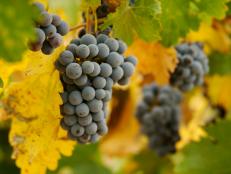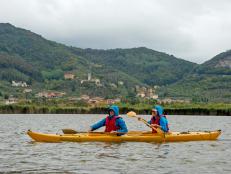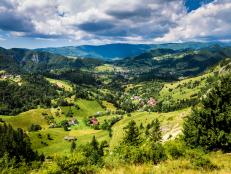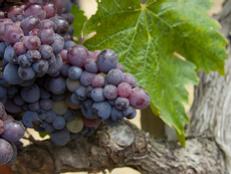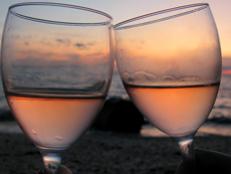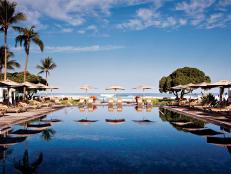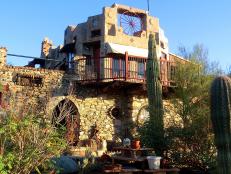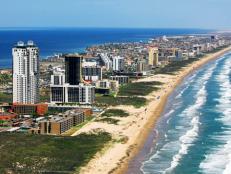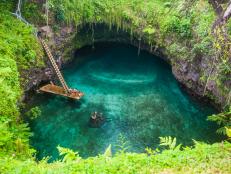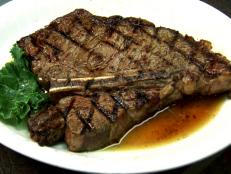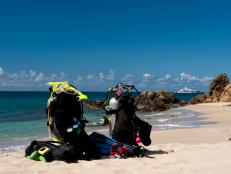Guide to Croatia's Wine Country
Take a wine tasting tour of Croatia's wonderful wine country.
By:
Justin Kennedy
Croatia’s 2 primary wine regions, Primorska Hrvatska (“coastal Croatia”) and Kontinentalna Hrvatska (“continental Croatia”), are divided into a total of 12 subregions, themselves further divided into smaller vinogorje (literally, “wine hills), which spread northeast from the radiant shores of the Dalmatian Coast to the sprawling floodplains of the Danube River. (It was in one of these vinogorje that the origin of California’s beloved zinfandel grape was ultimately discovered.)
The main point of entry for air travelers into Croatia is Zagreb Airport, just outside the capital city. Spend a couple days wandering Zagreb's old cobblestone streets and you’ll eventually find yourself at Vinoteka Bornstein, at Kaptol 19, where an outrageous selection of rare Croatian wines and truffle products are housed in a cavernous 19th-century vaulted brick cellar. Chat with the shop’s gregarious owner before embarking south to begin your tour.
There’s little doubt that Croatia’s wine regions offer an impressive mix of maritime wonderment and inland rusticity. Here are 5 of the best places to visit while you’re here.
Central and South Dalmatia: Birthplace of Zinfandel

On the Peljesac peninsula, winemaker Frano Milos makes some of Croatia’s most revered wines; unsurprisingly, tour buses frequently line up to visit his vineyards and winery. The islands of Korcula and Hvar, which produce the cult varietals grk and bogdanuša, respectively, are also part of Central and South Dalmatia, and the cities of Split and Dubrovnik have become regular stopovers for cruise ships traversing the Adriatic Sea between Italy and Greece.
North Dalmatia

Thinkstock
Premium quality Babić comes from terraced vineyards near the shores of Primosten, where generation after generation have carved dry-stone clusters of small rectangular plots into the rocky, improbably vine-bearing landscape that juts steeply from the Adriatic. A few miles inland, near the small town of Skradin, the Bibic family has been making wine from indigenous Croatian vines for nearly 5 centuries!
Istria

Thinkstock
One of the truest expressions of Istarski teran (as Terrano is known locally) comes from Coronica Winery, just outside the port town of Umag, where winemaker Moreno Coronica crafts organically grown grapes into a red wine of extraordinary character. Coronica also produces gorgeous whites, which are exceedingly fresh and exceptionally floral, from an indigenous strain of the malvasia grape called Istarska malvazija.
Slavonia

Thinkstock
Winemakers here absorb the influence of their Austrian neighbors to the north, crafting beautifully floral gewürztraminer and jammy, full-bodied zweigelt. Krauthaker Vineyards and Winery in the town of Kutjevo, at the foot of mount Krndija, grows a dizzying medley of both native Croatian vines and international varieties, like chardonnay and Sivi Pinot, the Croatian version of pinot gris.
Plešivica

Kova77, flickr
Tomislav Tomac, a local winemaker whose family has produced wine near the ancient town of Jastrebarsko for more than 200 years, grows riesling, chardonnay and native vines along steep, rocky slopes that are typical of Plešivica. The winery specializes in sparkling wines, some of which are made in the méthode champenoise (the traditional way of making champagne and sparkling wine). Since 2007 Tomac has been aging some of his still wines in clay amphora -- large ceramic fermentation vessels that are buried underground, which lend an oxidized, sherry-like quality to the wines.
Next Up
Winery Tour Road Trips
Check out our favorite winery tour road trips.
France's Southern Vineyards
Join Travel Channel for a wine-oriented romp through the villages and vineyards in the southern French region, Languedoc-Roussillon.
Virginia's Wine Country
From vineyards overlooking the Blue Ridge Mountains to viticulture bastions near the DC suburbs, Virginia's wine world is worth a visit.
Traversing Edinburgh's Fringe Festival With Kids
Find family-friendly tips for traveling to Edinburgh, Scotland.
Tuscany Should Be Your Next Adventure Travel Destination
Under the Tuscan Sun has given us a certain vision of idyllic Tuscany. But beyond its pretty looks and tasty food, there's outdoor adventure for everyone.
The Best Wineries in Transylvania
Transylvania may not be the first place to come to mind when you think of wine destinations, but these spots are definitely worth a visit for any traveling wine enthusiast.
Napa Valley Off-Season
Here are 15 not-to-be-missed off-season deals and tips for getting the most out of your wine country visit.
Best International Wine Festivals
Check out our picks for the best wine festivals around the world.
Long Island Wineries
At the very tip of Long Island's East End, the North and South Forks make up a young and fast-growing wine region.
Wine Tour Weekends
Here are 5 diverse wine-producing regions you won't want to miss.
